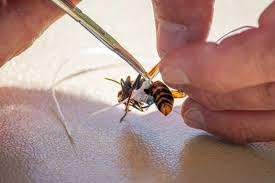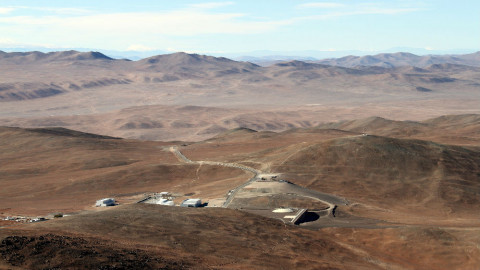Advertisement
While iron, sulfur and hydrogen elements have long been suggested as possible substitutes for oxygen, the discovery of the arsenotrophy microorganism in California's salty Lakes Searle and Mono lakes has made arsenic a contender.
Since then, stromatolites in the Tumbiana geological formation in Western Australia have revealed that collecting light and arsenic was an efficient model for photosynthesis in the Precambrian period. Iron or sulfur elements are different.
Just last year, researchers discovered a rich life form that also breathes arsenic in the Pacific Ocean.
Advertisement
Even La Brava's life forms resemble the purple sulfur bacteria Ectothiorhodospira SP., which was recently found in an arsenic-rich lake in Nevada. They seem to photosynthesize by oxidizing arsenic compounds into arsenates.
While more research is needed to approve if the La Brava microbes metabolize arsenic, preliminary studies have found that the turbulent water around these microbial mats is rich in hydrogen sulphide and arsenic.
La Brava microbes are indeed "breathing" arsenic, so these life forms would be the first to do so on a permanent and completely oxygen-free microbial cushion, which is very similar to what we think of as a Precambrian environment.
So, the microbial mat which it exists is an excellent model for understanding some of the possible life forms of early Earth.
Although genetic studies have shown that La Brava microbes have tools to metabolize arsenic and sulfur elements, the author says that its arsenic reduction appears to be more effective than sulfur reduction.
In any case, they say there is strong evidence that both pathways exist and these could have supported a large number of microbial mats in the early years of life on Earth.
If the team’s discovery is right, then perhaps we should broaden our study of life forms elsewhere.
Visscher said, “When looking for evidence of life on Mars, scientists will look for iron and maybe arsenic.”
It's really more than toxicant.
Advertisement
- Previous article
- Earwax can be a good indicator of how stressed a person is
- Next article
- $1 hearing aid
Advertisement
OTHER NEWS

Saudi Arabia Vision to Boost E-Commerce Industry
BY Janet

Hedgehogs increasing popularity in Japan
BY Jennifer

How to Upgrade Blued in Latin America
BY Christine

Each Person’s Internet History Is Unique
BY Ann

A Small Town Named Fucking in Austria
BY Edwards

USDA Is Fighting Against Vespa Mandarinia
BY Rebecca
RECENT NEWS
-

PUBG Mobile Esports Generated 200 Million Hours of Viewing in 2020
-

Mario Kart Tour Races to $200M revenue and 200M Downloads
-

Game Acquisitions Expand Globally in Q1 2021 with 280 Deals Worth $39 Billion Surpassing That in 2020
-

Free Fire Shows Strong Momentum, with Its Revenue Overtaking PUBG Mobile in a Single Market for Q1 2021
-

The Games Fund Launched a $50 Million Early Investment Fund to Invest in American and European Companies
-

How to Download and Install Wyze App for Free?

 1
1 1
1